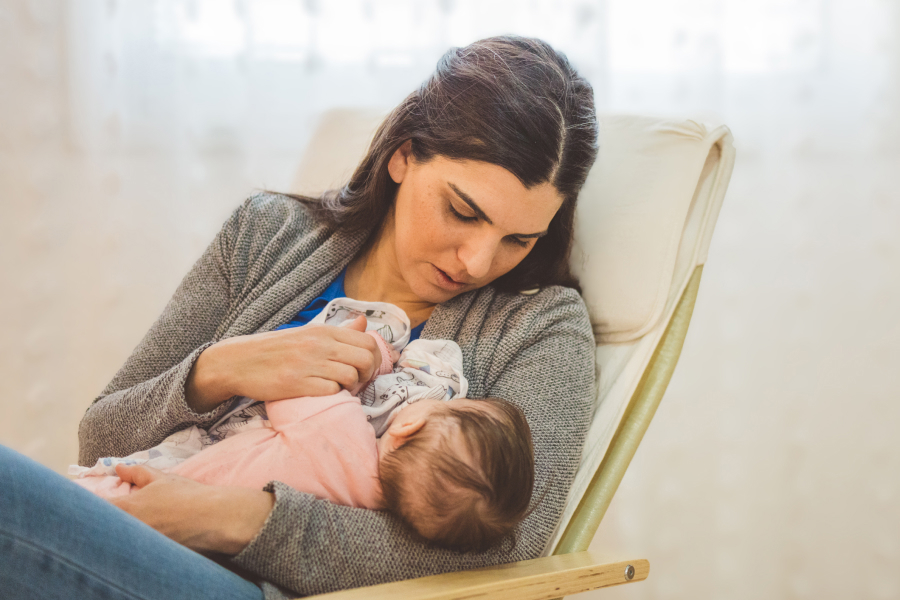Safe Pacifier Choice and Use Guidelines
If you have chosen to offer your infant a pacifier, you should know how to choose the one that is safest and how to maintain its hygiene to protect the infant's health. There are many types of pacifiers with different designs and colors, but they all have the same structure: the pacifier is made of a teat and a guard that surrounds it. Different infants will like different pacifiers and it is difficult to know in advance which one they will prefer. This means that you should try a few types until you find the right one. Sometimes, infants get used to a pacifier of a certain type and then refuse to switch to another. It is worth preparing in advance by getting additional pacifiers of the same type as a replacement to a lost or worn one.
Rules
Approval and standard mark
We should only buy a pacifier with a standard mark of the Standards Institution of Israel, which ensures that it has fulfilled all requirements of the standard and is made of safe materials and withstands compression, stretching, biting and boiling.
Age-appropriate pacifier
Manufacturers state whether a pacifier is suitable for newborns, infants 0-2 months old, half a year old or older. Follow their instructions.
The pacifier edges
We should make sure that the pacifier parts facing or adjacent to the infant’s lips and surrounding skin provide good ventilation of the skin. If the pacifier is surrounded by a rigid guard, we must make sure that it has air vents.
Pacifiers and hygiene
A pacifier is not a sterile object and it is important to know that bacteria that may cause illness might stick to it. Maintaining hygiene can prevent this:
- Before first using a pacifier, disinfect it in boiling water: the pacifier can be put into a cup or bowl with boiling water for 5 minutes or put into a sterilizer. After boiling, expel traces of water from the teat. Finally, dry the pacifier with a clean towel and always make sure that the pacifier is dry because a moist or wet teat or pacifier may be a source for development of bacteria and mold.
- Clean hands: wash your hands with soap and water before touching the pacifier or put it into the infant’s mouth.
- Rinse the pacifier: from time to time, especially if it gets dirty or drops.
- Children have their own pacifier: if there are several infants or children who use pacifiers in the same home, we must make sure to mark each one clearly so they do not get mixed up.
Pacifier storage
- Store the pacifier in a clean, ventilated vessel, and keep that vessel in a clean, dry place.
- Avoid keeping pacifiers in a closed container or plastic bag, because these storage methods enable the development of fungi, bacteria or mold, which may be dangerous.
- Avoid leaving a pacifier in a vehicle or anywhere where it is exposed to hot weather.
Pacifier and sugar water, honey or juice
It is important not to dip a pacifier in juice, sugar water or any other sweetener: infants do not need them and sweeteners may harm their teeth. In particular, we must not dip them in honey – because giving honey to infants is dangerous in the first year of life owing to concern of exposure to a dangerous bacterium.
Pacifier replacement
For safety reasons (pacifiers disintegrate over time) and to maintain hygiene, we should replace pacifiers every 3 months, even if they are regularly disinfected and kept clean, intact and in a good condition. In any case, it is advised to inspect pacifiers before any use and if we identify any defect we should discard the old one and replace it with a new one (even if 3 months have not passed).
Caution: tying a pacifier to a lace or ribbon
Caution: tying a pacifier to a lace or ribbon
Tying a pacifier around the infant’s neck with a lace or ribbon may cause strangulation because it may snag on a protruding object. Instead, the pacifier can be secured to clothing using a pacifier holder. A pacifier holder is a clasp that is used to attach the pacifier to clothing. To make sure that the clasp is safe, it is important to check that it comes with an official standard mark, and that it is short and has no pins or sharp parts that may injure an infant.
Cases in which it is recommended not to use a pacifier
-
Past the time recommended by the manufacturer
-
If it has any cracks, tears or wear
-
If there are pieces of silicone or rubber off from the pacifier
-
If it has been forgotten in a vehicle or left in a high temperature for a long time


















